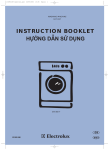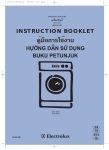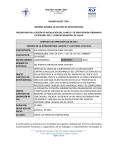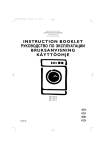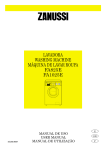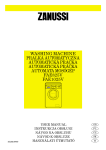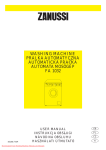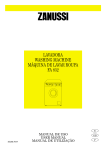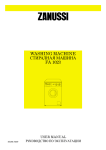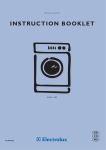Download Electrolux EW 975 W Specifications
Transcript
?? ?? ?? ?? ?? ?? ?? ?? ?? ?? ? ? ? ? ? ?? ?? ?? ?? ?? ? ? ? ? ? O2@@@@6Xg? ?O2@@@6Khf? @@he?@@?g? @@@@@@@@@@@?f? W2@@@@@@@)X?f? ?W2@@@@@@@6Xhe? 3@L?hJ@5?g? @@@@@@@@@@@?f??@@@@@@@6Kh? ?@@@@@@@@@6Xg? ?W&@(Me?I'@1?f? W&@(M?eI'@)X?h? N@1?h7@H?g? @@hg? ?@@?fI'@1g? ?7@(Y?fV4@?f? 7@(Yf?V'@1?h? ?@@?h@@h? @@hg? J@@Hhg? @@H?gN@@?h? ?3@Lg?J@5h? @@hg??@@?f?V'@L?f? ?@@?gN@1?f? 7@5?hg? ?J@5h?3@Lh? ?N@1g?7@Hh? @@hg? ?@@?g?@@?f? @@H?hg? ?7@Hh?N@1h? @@g?@@?h? @@hg? @@hg??@@?gJ@5?f? @@ ?@@?he@@h? ?? 3@L?fJ@5?h? ?@@?f?W&@H?f? @@ ?@@?he@@h? N@1?f7@H?h? @@@@@@@@@@g? ?@@?fO&@5g? @@ ?@@?he@@h? ?@@?f@@he? @@@@@@@@@@g? @@ ?@@?he@@h? ?? ?3@Le?J@5he? @@hg??@@@@@@@@@(Yg? ?@@@@@@@@@H?g? @@L?hg? ?3@Lh?J@5h? ?N@1e?7@Hhe? @@hg? 3@1?hg? ?N@1h?7@Hh? @@e?@@?he? @@hg??@@?f@@L?g? ?@@?f3@1?g? N@@Lhg? @@L?gJ@@?h? 3@L?J@5?he? @@hg? @@hg??@@?fN@@Lg? ?3@)X?fW2@?f? 3@)Xf?W&@5?h??3@?@5hf? N@1?7@H?he? ?@@?f?3@1g? ?V'@)Ke?O&@5?f? V'@)K?eO&@(Y?h? @@hg??@@?f?N@@L?f? V4@@@@@@@(Y?f? ?V4@@@@@@@0Yhe? ?N@@@Hhf? @@@@@@@@@@@?f? ?@@?g3@1?f? I4@@@@0Yg? ?I4@@@0Mhf? @@@@@@@@@@@?f? ?@@?gV4@?f? ? ? @@@?hf? ? ? ? ? ? ? ? ? ?? ?? ?? ?? ?? ? ? ? ? ? ?? ?? ?? ?? ?? ? ? ? ?? ? ?? ?? ?? ?? ? ?? ?? ?? ?? ?? ?? ?? ?? ?? ?? ?? ?? ?? ?? ?? ?? ?? ?? ?? ?? ?? ?? ?? ? ? ? ? ? ? ? ? ? ?? ?? ?? ?? ?? ?? ?? ?? ? ? ? ? ? ? ? ? ? ?? ?O2@hf? ?O2@@@6Xhe? W2@@@@@@)Xh? O2@@@6X?h? O2@@6Khe? W2@@@@@@6Xh? O2@@6Khe? ?O2@hf? W2@@@@@@)Xh? O2@@@6X?h? ?@@@@@@@@@@@@?g? O2@@6Khe? ?W2@@@hf? ?W2@@@@@@)X?h? W2@@@@@@6Xh? ?W2@@@hf? ?@@@@@@@@@@@5?g? W2@@@@@@6Xh? ?7@@@@hf? ?7@(M??I'@)Xh? ?W&@@0M?I'@)X?g? 7@(MeI'@1h? 7@(MeI'@1h? ?7@@@@hf? ?W&@@0M?I'@)X?g? ?W@(Y?g? 7@(MeI'@1h? ?@0Y@@hf? ?@0YfV'@1h? ?7@(M?e?V'@1?g? ?J@(Y?e?V'@L?g? ?J@(Y?e?V'@L?g? ?@0Y@@hf? ?7@(M?e?V'@1?g? W&(Yh? ?J@(Y?e?V'@L?g? @@hf? ?N@@h? ?@0YgN@@?g? ?7@HgN@1?g? ?7@HgN@1?g? @@hf? ?@0YgN@@?g? 7@H?h? ?7@HgN@1?g? @@hf? ?J@@h? ?@@?g? ?@@?g?@@?g? ?@@?g?@@?g? @@hf? ?@@?g? ?@@?g?@@?g? @@hf? O&@5h? J@@?g? ?@@?g?@@?g? ?@@?g?@@?g? J@@?g? ?J@5he? ?7@Hhe? ?@@?g?@@?g? @@hf??@@@@@@Hh? ?O&@5?g? ?3@LgJ@@?g? ?3@LgJ@@?g? @@hf? @@hf? ?O&@5?g? ?@@?he? ?@@?g?@@?g? @@hf? ?@@@@@@Lh? ?W2@@(Y?g? ?N@)X?e?W&@@?g? ?N@)X?e?W&@@?g? @@hf? ?W2@@(Y?g? ?@@?g?@@?g? @@hf? I'@)X?g? W&@@0Yh? 3@)KeO&@@@?g? W&@@0Yh? J@5?he? 7@H?he? ?@@?g?@@?g? @@hf? ?V'@1?g? ?O&@(Mhe? V4@@@@@@@@@?g? 3@)KeO&@@@?g? V4@@@@@@@@@?g? @@hf? @@hf? ?O&@(Mhe? @@hf? ?@@?g?@@?g? @@hf? N@@?g? @@hf? ?@@?g?@@?g? @@hf? ?@@?g? ?W2@@0Y?he? W&@(M?hf?I4@@0M?@@?g? ?@@?g? I4@@0M?@@?g? ?@@?g? @@hf? @@hf? ?W2@@0Y?he? W&@(M?hf??J@5hf? ?@@?g?@@?g? @@hf? J@@?g? ?W&@(Yhg? J@5?g? @6X?e?W&@H?g? J@5?g? @@hf? ?W&@(Yhg? ?3@LgJ@5?g? @@hf? ?@6Xf?O&@5?g? ?7@(Y?hg? @6X?e?W&@H?g? @@hf? ?7@(Y?hg??7@Hhf? ?@@?hf? ?N@)X?e?W&@H?g? @@hf? ?3@)K??O2@@(Y?g? ?@@Y 3@)KeO&@5h? ? 3@)KeO&@5h? @@hf? ?@@Y ??@@?hf? 3@)KeO&@5h? @@hf? ?V'@@@@@@@0Yh? ?@@@@@@@@@@@@?g? V'@@@@@@(Yh? V'@@@@@@(Yh? @@hf? ?@@@@@@@@@@@@?g? ?@@?hf? V4@@@@@@0Yh? @@hf? V4@@@@0Mhe? ?@@@@@@@@@@@@?g? ?V4@@@@0Y?h? ?@@@@@@@@@@@@?g? ? ? ? ? ?V4@@@@0Y?h?? @@hf? ? ??@@?hf?? I4@@0Mhe?? ?? ?? ?? ?? ?? ?? ?? ?? ?? ? ? ? ? ? ? ? ? ? ?? ?? ?? ?? ?? ?? ?? ?? ?? ? ? ? ? ? ? ? ? ? ?? ?? ?? ?? ?? ?? ?? ?? ?? ?? ?? ?? ?? ?? ?? ?? ?? ?? ? ? ? ? ? ? ? ? ? ?? ?? ?? ?? ?? ?? ?? ?? ?? ?? ?? ?? ?? ?? ?? ?? ? ? ? ? ? ? ? ? ?? ?? ?? ?? ?? ?? ?? ?? ? ? ? ? ? ? ? ? @@@@@@@@@@@?f? O2@@6Khe? ?@@@@@@@@@@@@?g? O2@@6Khe?@@g?W-Xg?@@?g ?? ?? ?@@?g? @@@@@@@@@@@?f?@@g?W-Xg?@@?g @@g?7@1g?@@?g W2@@@@@@6Xh? ?@@@@@@@@@@@5?g? W2@@@@@@6Xh? @@g?7@1g?@@?g?? ?@@?g? @@hg? 3@L?f?@@@gJ@5?g 7@(MeI'@1h? ?W@(Y?g? 7@(MeI'@1h?3@L?f?@@@gJ@5?g ?? ?? ?@@?g? @@hg??@@?f7@?@1?f@@h N@1?fJ@@@L?f7@H?g ?J@(Y?e?V'@L?g? W&(Yh? ?J@(Y?e?V'@L?g? N@1?fJ@@@L?f7@H?g??? ?@@?g? @@hg? ?7@HgN@1?g? 7@H?h? ?7@HgN@1?g? ?@@?f7@?@1?f@@h ? ? ?@@?g? @@hg? ?@@?g?@@?g? ?J@5he? ?@@?g?@@?g? ?W2@@6?2@?g? @6X?f?W2@e? ?W2@@6X@@?g? @@hg??3@Lf@@?@@?e?J@5h ?N@1f@@?@@?e?7@Hh ?@@?g?@@?g? ?7@Hhe? ?@@?g?@@?g??3@Lf@@?@@?e?J@5h ?N@1f@@?@@?e?7@Hh?? W&@@@@@@@?g? 3@)XfW&@5e? @@hg? ?3@LgJ@@?g? ?@@?he? ?@@?g?@@?g? V'@1f7@(Ye? W&@@@@@@@?g? @@e?J@5?3@Le?@@?h @@e?J@5?3@Le?@@?h?? ?J@(Y?eN@@?g? 7@(M?I'@@?g? 7@(M?I'@@?g? @@@@@@@@@@g? ?N@)X?e?W&@@?g? J@5?he? ?@@?g?@@?g? ?V'@L??J@(Y?e? ?J@(Y?eN@@?g? @@@@@@@@@@g? 3@L??7@H?N@1eJ@5?h N@1??@@?e@@e7@H?h 3@)KeO&@@@?g? 7@H?he? ?@@?g?@@?g? 3@L??7@H?N@1eJ@5?h N@1??@@?e@@e7@H?h? ?7@Hf?@@?g? V')KO&(Yf? @@hg? V4@@@@@@@@@?g? @@hf? ?@@?g?@@?g? ?V'@@(Y?f??7@Hf?@@?g? ?@@?f?@@?g? ?@@??@@?e@@e@@he ?@@??@@?e@@e@@he?? ?@@?f?@@?g? @@hg? I4@@0M?@@?g? @@hf? ?@@?g?@@?g? ?@@?g??@@?f?@@?g? @@hg? ?3@??@5?e3@e@5he ?N@@@@H?eN@@@@Hhe ?@@?g? ?J@5hf? ?@@?g?@@?g? ?3@??@5?e3@e@5he ?N@@@@H?eN@@@@Hhe? ?@@?f?@@?g? ?@@?f?@@?g? ?W&@@)X?f? ?@@?f?@@?g? @@hg? J@5?g? ?7@Hhf? ?3@LgJ@5?g? ? ?3@Lf?@@?g? W&(MI')Xf??3@Lf?@@?g? @@hg? @@@@f?@@@@?he @6X?e?W&@H?g? ?@@?hf? ?N@)X?e?W&@H?g? @@@@f?@@@@?he ?W&@H??N@)X?e? @@hg? 3@@5f?3@@5?he N@@Hf?N@@H?he 3@)KeO&@5h? ?@@?hf? 3@)KeO&@5h? 3@@5f?3@@5?he N@@Hf?N@@H?he @@@?f?? ?N@)X?eJ@@?g? 3@)K?O&@@?g? W&@5f3@)Xe??N@)X?eJ@@?g? 3@)K?O&@@?g? @@@@@@@@@@@?f? V'@@@@@@(Yh? V4@@@@@@0Yh? ?@@?g@@hf @@@?f? V'@@@@@@@?g? 7@(YfV'@1e? @@@@@@@@@@@?f?? ?@@?g@@hf ?@@?g@@hf ?V4@@@@0Y?h?? ?@@?hf? ?@@?hf? @@@?f?? ?V4@@0Y@@?g? @0Y?f?V4@e?? V'@@@@@@@?g? ?V4@@0?4@?g?? ?I4@@0Mhe?? ?@@?g@@hf ?@@?g? ? ? ? ? ? ?@@?g? ?? ?? ?@@?g? ?? ?? ?? ?? ?? ?@@?g? ? ? ? ? ? ? ? ?? ?? ?? ?? ?? ?? ?? ?? ? ? ? ?? ?? ?? ?? ? ? ?? ? ?? ?? ?? ? ? ? ? ?? ?? ?? ?? ?? ?? ?? ?? ? ?? ?? ?? ?? ?? ?? ?? ?? ?? ?? ?? ?? ?? ?? ?? ?? ?? ?? ?? ?? ? ? ? ? ? ? ? ? ? ? ?? ?? ?? ?? ?? ?? ? ? ? ? ? ? ? ? ? ? ?? ?? ?? ?? O2@@@6X?h? ?O2@@6X?h? ?? W2@@@@@@6Xh? O2@@6Khe? O2@@6Khe? ?? W2@@@@@@)Xh? O2@@@6X?h? O2@@6Khe? W2@@@@@@6Xh? O2@@6Khe? ?O2@@@6Xhe? W2@@@@@@)Xh? ?W2@@@@@)Xh? W2@@@@@@6Xh? W2@@@@@@6Xh? ?W2@@@@@@)X?h? ?W&@@0M?I'@)X?g? W&@(M?I'@1h? ?? 7@(MeI'@1h? 7@(MeI'@1h? ?W&@@0M?I'@)X?g? ?? 7@(MeI'@1h? 7@(MeI'@1h? ?7@(M??I'@)Xh? ?7@(M?e?V'@1?g? 7@(Ye?V4@h? ?J@(Y?e?V'@L?g? ?J@(Y?e?V'@L?g? ?7@(M?e?V'@1?g? ?J@(Y?e?V'@L?g? ?J@(Y?e?V'@L?g? ?@0YfV'@1h? ?@0YgN@@?g? ?J@(Y?hg? ?7@HgN@1?g? ? ?7@HgN@1?g? ?@0YgN@@?g? ? ?7@HgN@1?g? ?7@HgN@1?g? ?N@@h? ?@@?g? ?7@H ? ?@@?g?@@?g? ?? ?@@?g?@@?g? ?? ?@@?g? ?@@?g?@@?g? ?@@?g?@@?g? ?J@@h? J@@?g? ?@@?W2@@6Khe? ?@@?g?@@?g? ?@@?g?@@?g? J@@?g? ?@@?g?@@?g? ?@@?g?@@?g? O&@5h? ?O&@5?g? ?@@W&@@@@@6Xh? ?@@?g?@@?g? ? ?3@LgJ@@?g? ? ?O&@5?g? ?@@?g?@@?g? ?@@?g?@@?g??@@@@@@Hh? ?W2@@(Y?g? ?@@@(MeI'@1h? ?@@@@@@@@@@ ?@@?g?@@?g? ?N@)X?e?W&@@?g? ?@@@@@@@@@@ ?W2@@(Y?g? ?@@?g?@@?g? ?@@?g?@@?g? ?@@@@@@Lh? W&@@0Yh? ?@@(Y?e?V'@L?g? ?@@@@@@@@@@ ?@@?g?@@?g? 3@)KeO&@@@?g? ?@@@@@@@@@@ W&@@0Yh? ?@@?g?@@?g? ?@@?g?@@?g? I'@)X?g? ? ? ?O&@(Mhe? ?O&@(Mhe? ?@@HgN@1?g? ?@@?g?@@?g? V4@@@@@@@@@?g? ?@@?g?@@?g? ?@@?g?@@?g? ?V'@1?g? ?W2@@0Y?he? ?@@?g?@@?g? ?@@?g?@@?g? ?? I4@@0M?@@?g? ?? ?W2@@0Y?he? ?@@?g?@@?g? ?@@?g?@@?g? N@@?g? W&@(M?hf? ?@@?g?@@?g? ?@@?g?@@?g? ?@@?g? W&@(M?hf? ?@@?g?@@?g? ?@@?g?@@?g? ?@@?g? ?W&@(Yhg? ?3@LgJ@5?g? ?3@LgJ@5?g? ?? J@5?g? ?W&@(Yhg? ?? ?3@LgJ@5?g? ?3@LgJ@5?g? J@@?g? ?7@(Y?hg? ?N@)X?e?W&@H?g? ?N@)X?e?W&@H?g? @6X?e?W&@H?g? ?7@(Y?hg? ?N@)X?e?W&@H?g? ?N@)X?e?W&@H?g? ?@6Xf?O&@5?g? ?@@Y 3@)KeO&@5h? ? ? 3@)KeO&@5h? 3@)KeO&@5h? ?@@Y ? 3@)KeO&@5h? ? 3@)KeO&@5h? ?3@)K??O2@@(Y?g? ?@@@@@@@@@@@@?g? V4@@@@@@0Yh? ? V4@@@@@@0Yh? V'@@@@@@(Yh? ?@@@@@@@@@@@@?g? ? V4@@@@@@0Yh? V4@@@@@@0Yh? ?V'@@@@@@@0Yh? ?@@@@@@@@@@@@?g? ?V4@@@@0Y?h? ?@@@@@@@@@@@@?g? V4@@@@0Mhe? ?I4@@0Mhe?? ?? I4@@0Mhe? ? ? ?? ?I4@@0Mhe?? I4@@0Mhe? ? ? ? ? ? ? ? ? ? ? ? ? ?? ?? ?? ?? ?? ?? ?? ?? ?? ?? ? ? ? ? ? ? ? ? ? ? ?? ?? ?? ?? ?? ?? ?? ?? ?? ?? ?? ?? ?? ?? ?? ?? ?? ?? ?? ?? ? ? ? ? ? ? ? ? ? ? ?? ?? ?? ?? ?? ?? ?? ?? ?? ?? ?? ?? ?? ?? ?? ?? ?? ?? ?? ?? ? ? ? ? ? ?? ?? ?? ?? ?? ? ? ? ? ? ?O2@hf? O2@@6Khe? ?? W2@@@@@@)Xh? O2@@@6X?h? O2@@6Khe? ?W2@@@hf? W2@@@@@@6Xh? W2@@@@@@6Xh? ?7@@@@hf? 7@(MeI'@1h? ?W&@@0M?I'@)X?g? ?? 7@(MeI'@1h? ?@0Y@@hf? ?J@(Y?e?V'@L?g? ?7@(M?e?V'@1?g? ?J@(Y?e?V'@L?g? @@hf? ?7@HgN@1?g? ?@0YgN@@?g? ? ?7@HgN@1?g? @@hf? ?@@?g?@@?g? ?@@@g? ?@@?g? ?@@?g?@@?g? @@hf? ?@@?g?@@?g? ?@@@g? J@@?g? ?@@?g?@@?g? @@hf? ?@@?g?@@?g? ?@@@g? ?O&@5?g? ?@@?g?@@?g? @@hf? ?@@?g?@@?g? ? ?W2@@(Y?g? ?@@?g?@@?g? @@hf? ?@@?g?@@?g? W&@@0Yh? ?@@?g?@@?g? ?? ?O&@(Mhe? @@hf? ?@@?g?@@?g? ?@@?g?@@?g? @@hf? ?@@?g?@@?g? ?W2@@0Y?he? ?@@?g?@@?g? ?? W&@(M?hf? @@hf? ?@@?g?@@?g? ?@@?g?@@?g? @@hf? ?3@LgJ@5?g? ?W&@(Yhg? ?? ?3@LgJ@5?g? @@hf? ?N@)X?e?W&@H?g? ?7@(Y?hg? ?N@)X?e?W&@H?g? @@hf? 3@)KeO&@5h? ?@@@g? ?@@Y 3@)KeO&@5h? ? @@hf? V4@@@@@@0Yh? ?@@@g? ?@@@@@@@@@@@@?g? V4@@@@@@0Yh? @@hf? ?@@@g? ?@@@@@@@@@@@@?g? ?I4@@0Mhe? ? ? ?I4@@0Mhe?? ?? ?? ?? ?? ?? ? ? ? ? ? ?? ?? ?? ?? ?? ? ? ? ? ? ?? ?? ?? ?? ?? ?? ?? ?? ?? ?? ? ? ? ? ? ?? ?? ?? ?? ?? ?? ?? ?? ? ? ? ? ?? ?? ?? ?? ? ? ? ? ?@@@@@@@6Kg? ?? ?? ?? ?@@@@@@@@@6Xf? ?@@?fI'@1f? ?? ? ?? ?@@?f?V'@L?e? ?@@?gN@1?e? ? ?W2@@6?2@?g?? ? ?@@?g?@@?e? ?O2@@@6Xg? W&@@@@@@@?g? ?W2@@6X?g? ?@@?gJ@5?e? ?W2@@@@@@)X?f? 7@(M?I'@@?g? W&@@@@)Xg? ?@@?f?W&@H?e? ?7@(M??I'@1?f? 7@(MI'@1g? ?J@(Y?eN@@?g? ?@@?fO&@5f? ?@0YfN@@?f? ?J@(Y??V'@L?f? ?@@@@@@@@@0Yf? ?@@?f??7@Hf?@@?g? ?@@?f?@@?g? ?7@YfV@1?f? ?@@@@@@@0Mg? ?O2@@@@@@?f? ?@@?f?@@?g? ?@@@@@@@@@@?f? ?@@?hf? ?W2@@@@@@@@?f? ?@@@@@@@@@@?f? ?@@?hf? ?7@@0Me?@@?f??@@?f?@@?g? ?3@Lf?@@?g? ?@@?hf? ?@@?hf? ?@@?f?@@?f? ?3@Lhf? ?@@?hf? ?@@?fJ@@?f??N@)X?eJ@@?g? ?N@)X?he? ?@@?hf? ?3@?e?O&@@?f? 3@)K?O&@@?g? V'@@@@@@@?g? 3@)K?O2@(?f? ?@@?hf? ?V'@@@@@@@@?f? ?V4@@0Y@@?g? V'@@@@@(Y?f? ?@@?hf? V4@@@0?4@?f? ?@@?g? ?V4@@@0Yg?? ? ? J@5?g? ?? ?@6Ke?O&@H?g? ?? ?? ?3@@@@@@@@h? ? ?V4@@@@0M?h? ? ? ?? ?? ?? ?? ? ? ? ? ?? ?? ? ?? ?? ?? ??? ?? ? ? ? ? ?? ?? ? ?? ? ?O2@hf? ?W2@@@hf? ?7@@@@hf? ?@0Y@@hf? @@hf? @@hf? @@hf? @@hf? @@hf? @@hf? @@hf? @@hf? @@hf? @@hf? @@hf? @@hf? @@hf? @@hf?? ?? ? ?? ? ?? ?? ? 132991270.qxd 09/09/2003 14:14 Pagina 3 (Nero/Process Black pellicola) Warnings Disposal 4-5 International wash code symbols 5 Tips for environmental protection 5 Technical specifications 6 Installation 7 Unpacking 7 Positioning 7 Water inlet 7 Water drainage 8 Electrical connection 8 Description of the appliance Detergent dispenser drawer Use Controls 10 Washing hints 11 Sorting the laundry 11 Temperatures 11 Before loading the laundry 11 Maximum loads 11 Laundry weights 11 Removing stains 11 Detergents and additives Drying hints 12 13 Garments not suitable for drying 13 Drying symbols on garment labels 13 Duration of the drying cycle 13 Fibre residue 13 Additional drying 13 15-16 Drying only 17 Automatic washing and drying 17 3 18-19 20 21 Bodywork 21 Detergent dispenser drawer 21 Drain filter 21 Water inlet filter 21 Emergency emptying out 22 Frost precautions 22 Something not working? 13 Load Washing only Maintenance 10 10 15-17 Drying programmes 9 Control panel Operating sequence Washing programmes 9 14 23-24 ENGLISH Contents 132991270.qxd 09/09/2003 14:14 Pagina 4 (Nero/Process Black pellicola) Warnings The following warnings are provided in the interests of overall safety. You must read them carefully before installing or using the appliance. Installation • Use only the recommended quantities of fabric softener. An excessive amount could damage the laundry. • All internal packing must be removed before using the appliance. Serious damage may be caused to the machine or adjacent furniture if the protective transit devices are not removed or are not completely removed. Refer to the relevant paragraph in the instruction book. • Leave the porthole door slightly ajar when the appliance is not in use. This preserves the door seal and prevents the formation of musty smells. • Always check that water has emptied out before opening the door. If not, drain the water following the instructions in the instruction book. • Any electrical work required to install this appliance must be carried out by a qualified electrician. • Always unplug the appliance and shut the water tap after use. • Any plumbing work required to install this appliance must be carried out by a qualified plumber. General safety • After having installed the machine, check that it is not standing on its electrical supply cable. • Repairs to the machine must be carried out only by qualified personnel. Repairs carried out by inexperienced persons could cause serious danger. Contact your local Service Centre. • If the appliance is placed on a carpeted floor, ensure that air can circulate freely between the feet and the floor. • Never pull the power supply cable to remove the plug from the socket; always take hold of the plug itself. Use • During high temperature wash programmes and during the drying cycle the door glass may get hot. Do not touch it! • This appliance is designed for domestic use. It must not be used for purposes other than those for which it was designed. • Only wash and dry fabrics which are designed to be machine washed and dried. Follow the instructions on each garment label. • Do not overload the appliance. Follow the instructions in the instruction book. • Make sure that all pockets are empty. Objects such as coins, safety pins, pins and screws can cause extensive damage. • Do not machine wash garments saturated with petroleum, methylated spirits, trichlorethylene, etc. If such fluids have been used to remove stains prior to washing, wait until they have completely evaporated from the fabric before placing garments in the appliance. • Place small items such as socks, belts, etc. in a cloth bag or pillowcase to prevent them getting trapped between the drum and the tub. • If you use a liquid detergent with a dispenser which has to be placed directly in the drum, remember to remove this dispenser before drying. 4 09/09/2003 14:14 Pagina 5 (Nero/Process Black pellicola) Child safety • Keep all detergents in a safe place out of children’s reach. • Children are often not aware of how dangerous electrical appliances can be. When the machine is working, children should be carefully supervised and not be allowed to play with the appliance. • Make sure that children or pets do not climb into the drum. • When the appliance is to be scrapped, cut off the electrical supply cable and destroy the plug with the remaining cable. Disable the door catch in order to prevent children from becoming trapped inside while playing. • The packaging components (e.g. plastic film, polystyrene) can be dangerous to children danger of suffocation! Keep them out of children’s reach. Disposal Packaging materials The materials marked with the symbol recyclable. Machine are Use authorised disposal sites for your old appliance. Help to keep your country tidy! >PE<=polyethylene >PS<=polystyrene >PP<=polypropylene This means that they can be recycled by disposing of them properly in appropriate collection containers. Tips for environmental protection To save water, energy and to help protect the environment, we recommend that you follow these tips: • With adequate pre-treatment, stains and limited soiling can be removed; the laundry can then be washed at a lower temperature. • Normally soiled laundry may be washed without prewashing in order to save detergent, water and time (the environment is protected too!). • Measure out detergent according to the water hardness, the degree of soiling and the quantity of laundry being washed. • The machine works more economically if it is fully loaded (for both washing and drying cycles). • The machine will consume less energy if the laundry is adequately spun before being dried. 5 ENGLISH 132991270.qxd 132991270.qxd 09/09/2003 14:14 Pagina 6 (Nero/Process Black pellicola) Technical specifications DIMENSIONS Height Width Depth MAXIMUM LOAD Cotton Synthetics Delicates Woollens 85 cm 60 cm 58 cm WASHING 5.5 kg 2.5 kg 2.5 kg 2 kg DRYING 2.5 kg 2 kg - SPIN SPEED 900 rpm max. (EW 970 W) 1000 rpm max. (EW 1070 W) POWER SUPPLY VOLTAGE/FREQUENCY TOTAL POWER ABSORBED MINIMUM FUSE PROTECTION 230-240 V/50 Hz 2050 W 10 A WATER PRESSURE 50 kPa 800 kPa Minimum Maximum This appliance complies with the following EEC Directives: 73/23/EEC of 19/02/73 relating to low voltage 89/336/EEC of 03/05/89 relating to electromagnetic compatibility. 6 132991270.qxd 09/09/2003 14:14 Pagina 7 (Nero/Process Black pellicola) Unpacking 6. Set the machine upright and remove the two remaining bolts from the back. 7. Pull out the three plastic spacers from the holes into which the bolts were fitted. 8. Plug the open holes with the plugs which are supplied with the instruction booklet. All transit bolts and packing must be removed before using the appliance. You are advised to keep all transit devices so that they can be refitted if the machine ever has to be transported again. 1. Using a spanner, unscrew and remove the rear right-hand bolt and lay the machine on its back, taking care not to squash the hoses. This can be avoided by placing one of the corner packing pieces between the machine and the floor. P0256 P0020 Positioning Install the machine on a flat hard floor. Make sure that air circulation around the machine is not impeded by carpets, rugs etc. Check that the machine does not touch the wall or other kitchen units. Carefully level by screwing the adjustable feet in or out. Never place cardboard, wood or similar materials under the machine to compensate for any unevenness in the floor. P0255 2. Remove the polystyrene block from the underside of the machine and release the two plastic bags. 3. Carefully remove the right-hand bag (1) then the left-hand bag (2) by pulling them towards the centre of the machine. 4. Unscrew and remove the feet. 2 P1065S P1051 1 Water inlet Connect the water inlet hose to a tap with a 3/4" thread. P1066 5. Fit the grid (A) on the bottom of the machine using the four screws (B) you will find in the bag containing the instruction booklet (only for EW 970 W). Re-fit the feet. P1088 B B P0021 The other end of the inlet hose which connects to the machine can be turned in any direction. Simply loosen the fitting, rotate the hose and retighten the fitting, making sure there are no water leaks. A B B P1067 7 The inlet hose must not be lengthened. If it is too short and you do not wish to move the tap, you will have to purchase a new, longer hose specially designed for this type of use. ENGLISH Installation 132991270.qxd 09/09/2003 14:14 Pagina 8 (Nero/Process Black pellicola) Water drainage Electrical connection The end of the drain hose can be positioned in three ways: This machine is designed to operate on a 230-240 V, single-phase, 50 Hz supply. Hooked over the edge of a sink using the plastic hose guide supplied with the machine. In this case, make sure the end cannot come unhooked when the machine is emptying. This could be done by tying it to the tap with a piece of string or attaching it to the wall. Check that your domestic electrical installation can take the maximum load required (2.05 kW), also taking into account any other appliances in use. WARNING: THIS APPLIANCE MUST BE EARTHED. The manufacturer declines any liability should this safety measure not be observed. The appliance is supplied with a 13amp plug fitted. In the event of having to change the fuse in the plug supplied, a 13amp ASTA approved (BS1363A) fuse must be used. Should the plug need to be replaced for any reason, proceed as described below. The wires in the mains lead are coloured in accordance with the following code: P0022 In a sink drain pipe branch. This branch must be above the trap so that the bend is at least 60 cm above the ground. Directly into a drain pipe at a height of not less than 60 cm and not more than 90 cm. The end of the drain hose must always be ventilated, i.e. the inside diameter of the drain pipe must be larger than the outside diameter of the drain hose. Green and Yellow - Earth Blue - Neutral Brown - Live GREEN & YELLOW 13A E The drain hose must not be kinked. Run it along the floor; only the part near the drainage point must be raised. N L BROWN BLUE P1041 P1041 CORD CLAMP The wire coloured green and yellow must be connected to the terminal marked with the letter «E» or by the earth symbol or coloured green and yellow. The wire coloured blue must be connected to the terminal «N» or coloured black. P0023 The wire coloured brown must be connected to the terminal marked «L» or coloured red. Upon completion there must be no cut, or stray strands of wire present and the cord clamp must be secure over the outer sheath. WARNING: A cut off plug inserted into a 13 amp socket is a serious safety (shock) hazard. Ensure that the cut off plug is disposed of safely. 8 132991270.qxd 09/09/2003 14:14 Pagina 9 (Nero/Process Black pellicola) 1 Detergent dispenser drawer 1 2 Programme chart ENGLISH Description of the appliance 3 3 Control panel 4 Drain filter DRYING Cottons A Whites with prewash B Whites B Coloureds C Rinses D Long spin F Drying 5 Adjustable feet TEMPERATURE PROGRAMMES EW 970 W Synthetics and special 60°- 95° 60°- 95° 40°- 60° G Synthetics H Quick cycle J Short spin K Drying L Wool M Delicates N Rinses P Drain On-Off 30°- 60° 30° Quick Half - 40° - 40° 2 4 5 Detergent dispenser drawer Prewash Main wash Fabric softener, starch C0063 9 132991270.qxd 09/09/2003 14:14 Pagina 10 (Nero/Process Black pellicola) Use Control panel DRYING Cottons A Whites with prewash B Whites B Coloureds C Rinses D Long spin F Drying TEMPERATURE PROGRAMMES 7 8 EW 970 W Synthetics and special 60°- 95° 60°- 95° 40°- 60° G Synthetics H Quick cycle J Short spin K Drying L Wool M Delicates N Rinses P Drain On-Off 30°- 60° 30° Quick Half - 40° - 40° 1 2 3 45 6 1 Programme guide 5 On/Off button 2 Drying time selector dial By depressing this button the machine starts operating. When depressed again, the machine stops. Graduated up to 120 mins for cottons (blue section) and synthetics (green section), this dial allows you to select the desired drying time according to the type and quantity of laundry and the required degree of dryness. Turn the dial clockwise only. 6 Quick Half button Select this button to reduce water consumption on the rinse cycle when washing a smaller load of cottons and linens (max. load size=2.5 kg). Cooling phase To allow the laundry to cool down, a cooling phase starts automatically 10 minutes before the end of drying and this phase must in no circumstances be reduced or interrupted. 7 Temperature selector dial Turn this dial clockwise or anti-clockwise to select the required temperature. Position means that the machine will wash with cold water. 3 Drying indicator light 8 Programme selector dial This light illuminates when the machine is drying. Turn the dial clockwise to select the required wash and drying programme. 4 Mains-on light Before setting the dial to any position the machine must be switched off by depressing the ON/OFF button again. This light illuminates when the machine starts working and goes out when the ON/OFF button is released. 10 09/09/2003 14:14 Pagina 11 (Nero/Process Black pellicola) Laundry weights Washing hints The following weights are indicative: bathrobe Sorting the laundry Follow the wash code symbols on each garment label and the manufacturer’s washing instructions. Sort the laundry as follows: whites, coloureds, synthetics, delicates, woollens. Temperatures 95° 60° for normally soiled white cottons and linen (e.g. tea cloths, towels, tablecloths, sheets...) for normally soiled, colour fast garments (e.g. shirts, night dresses, pyjamas....) in linen, cotton or synthetic fibres and for lightly soiled white cotton (e.g. underwear). (cold) for delicate items (e.g. net curtains), mixed 30°-40° laundry including synthetic fibres and woollens. 1200 g napkin 100 g quilt cover 700 g sheet 500 g pillow case 200 g tablecloth 250 g towelling towel 200 g tea cloth 100 g night dress 200 g ladies’ briefs 100 g man’s work shirt 600 g man’s shirt 200 g man’s pyjamas 500 g blouse 100 g men’s underpants 100 g Removing stains Before loading the laundry Stubborn stains may not be removed by just water and detergent. It is therefore advisable to treat them prior to washing. Never wash whites and coloureds together. Whites may lose their “whiteness” in the wash. Blood: treat fresh stains with cold water. For dried stains, soak overnight in water with a special detergent then rub in the soap and water. New coloured items may run in the first wash; they should therefore be washed separately the first time. Make sure that no metal objects are left in the laundry (e.g. hair clips, safety pins, pins). Button up pillowcases, close zip fasteners, hooks and poppers. Tie any belts or long tapes. Oil based paint: moisten with benzine stain remover, lay the garment on a soft cloth and dab the stain; treat several times. Remove persistent stains before washing. Rub particularly soiled areas with a special detergent or detergent paste. Dried grease stains: moisten with turpentine, lay the garment on a soft surface and dab the stain with the fingertips and a cotton cloth. Treat curtains with special care. Remove hooks or tie them up in a bag or net. Maximum loads Rust: oxalic acid dissolved in hot water or a rust removing product used cold. Be careful with rust stains which are not recent since the cellulose structure will already have been damaged and the fabric tends to hole. Recommended loads are indicated in the programme charts. Mould stains: treat with bleach, rinse well (whites and fast coloureds only). General rules: Grass: soap lightly and treat with bleach (whites and fast coloureds only). Cotton, linen: drum full but not too tightly packed; Ball point pen and glue: moisten with acetone (*), lay the garment on a soft cloth and dab the stain. Synthetics: drum no more than half full; Delicate fabrics and woollens: drum no more than one third full. Lipstick: moisten with acetone as above, then treat stains with methylated spirits. Remove any residual marks from white fabrics with bleach. Washing a maximum load makes the most efficient use of water and energy. Red wine: soak in water and detergent, rinse and treat with acetic or citric acid, then rinse. Treat any residual marks with bleach. For heavily soiled laundry, reduce the load size. 11 ENGLISH 132991270.qxd 132991270.qxd 09/09/2003 14:14 Pagina 12 (Nero/Process Black pellicola) Ink: depending on the type of ink, moisten the fabric first with acetone (*), then with acetic acid; treat any residual marks on white fabrics with bleach and then rinse thoroughly. Quantity of detergent to be used The type and quantity of detergent will depend on the type of fabric, load size, degree of soiling and hardness of the water used. Tar stains: first treat with stain remover, methylated spirits or benzine, then rub with detergent paste. (*) do not use acetone on artificial silk. Water hardness is classified in so-called “degrees” of hardness. Information on hardness of the water in your area can be obtained from the relevant water supply company, or from your local authority. Detergents and additives Follow the product manufacturers’ instructions on quantities to use. Good washing results also depend on the choice of detergent and use of the correct quantities to avoid waste and protect the environment. Although biodegradable, detergents contain substances which, in large quantities, can upset the delicate balance of nature. Use less detergent if: – you are washing a small load, – the laundry is lightly soiled, – large amounts of foam form during washing. The choice of detergent will depend on the type of fabric (delicates, woollens, cottons, etc.), the colour, washing temperature and degree of soiling. All commonly available washing machine detergents may be used in this appliance: – powder detergents for all types of fabric, – powder detergents for delicate fabrics (60°C max) and woollens, – liquid detergents, preferably for low temperature wash programmes (60°C max) for all types of fabric, or special for woollens only. The detergent and any additives must be placed in the appropriate compartments of the dispenser drawer before starting the wash programme. If using concentrated powder or liquid detergents, a programme without prewash must be selected. The washing machine incorporates a recirculation system which allows an optimal use of the concentrated detergent. Pour liquid detergent into the dispenser drawer compartment marked just before starting the programme. Any fabric softener or starching additives must be poured into the compartment marked before starting the wash programme. Follow the product manufacturer’s recommendations on quantities to use and do not exceed the «MAX» mark in the detergent dispenser drawer. 12 09/09/2003 14:14 Pagina 13 (Nero/Process Black pellicola) Drying symbols on garment labels Drying hints Always look at the garment label to check whether garments can be machine dried. As a dryer, the machine works on the condensation principle. The following symbols refer to drying: Therefore, the water tap must be open and the drain hose must drain water into a sink or into the drain pipe, even during the drying cycle. Machine drying is usually possible Normal drying (normal temperature) Gentle drying (reduced temperature) Load Do not machine dry Sort of laundry max. load (dry weight) Duration of the drying cycle Linen and cottons 2.5 kg The drying time can vary according to Synthetics 2 • the final spin speed; kg • the required degree of drying (store dry or iron dry); Warning: • the type of laundry; Loads of washed laundry exceeding these values must be divided before being dried, otherwise poor results will be obtained. • the size of load. The usual drying times are indicated in the programme chart. As you become more familiar with the appliance, you will discover the drying times that best suit your needs according to the various type of fabric. It is a good idea to make a note of these times. Garments not suitable for drying • Particularly delicate items such as synthetic curtains, woollen and silk, garments with metal inserts, nylon stockings, bulky garments such as anoraks, bedcovers, quilts, sleeping bags and duvets must not be machine dried. Fibre residue After drying fluffy fabrics, such as new towels, it is advisable to perform the rinse programme N to be sure that any residue that may remain in the tub is completely removed and does not stick to garments dried afterwards. • Garments padded with foam-rubber or materials similar to foam-rubber must not be machine dried; they represent a fire hazard. • Also, fabrics containing residues of setting lotions or hair sprays, nail solvents or similar solutions must not be machine dried in order to avoid the formation of harmful vapours. After each drying cycle the filter should be checked and cleaned. Additional drying Should the laundry still be too wet at the end of the programme, set another short drying cycle. Warning! To prevent the formation of creases or shrinking of fabrics, avoid excessive drying. 13 ENGLISH 132991270.qxd 132991270.qxd 09/09/2003 14:14 Pagina 14 (Nero/Process Black pellicola) International wash code symbols These symbols appear on fabric labels, in order to help you choose the best way to treat your laundry. Energetic wash 95 60 40 30 Max. wash temperature 95°C Max. wash temperature 60°C Max. wash temperature 40°C Max. wash temperature 30°C Delicate wash 60 Bleaching Bleach in cold water 40 Hand wash 30 40 Do not wash at all Do not bleach Ironing Hot iron max 200°C Warm iron max 150°C Lukewarm iron max 110°C Do not iron Dry cleaning Dry cleaning in all solvents Dry cleaning in perchlorethylene, petrol, pure alcohol, R 111 & R 113 Dry cleaning in petrol, pure alcohol and R 113 Do not dry clean high temperature low temperature Drying Flat On the line On clothes hanger 14 Tumble dry Do not tumble dry 09/09/2003 14:14 Pagina 15 (Nero/Process Black pellicola) 4. Depress the Quick Half button if required Operating sequence Washing only 5. Select the temperature Before washing your first load of laundry, we recommend that you run a cotton cycle at 60°C, with the machine empty, in order to remove any manufacturing residue from the drum and tub. Pour half a measure of detergent into the main wash compartment and start up the machine. Turn the dial to the required setting. 95 1. Place the laundry in the drum Open the door. M0045 Place the laundry in the drum, one item at a time, shaking them out as much as possible. Close the door. 6. Select the required programme Turn the programme selector dial clockwise to the desired position. B P0004 M0046 2. Measure out the detergent Pull out the dispenser drawer until it stops. Measure out the amount of detergent recommended by the manufacturer in a graduated cup and pour it into the main wash compartment . 7. Start the machine Depress the ON/OFF button: the mains-on light will illuminate and the machine starts operating. If you wish to carry out the prewash, pour detergent into the appropriate compartment marked . 3. Measure out the additive On-Off If required, pour fabric softener into the compartment marked , without exceeding the «MAX» mark. P0080S C0064 C0065 15 ENGLISH 132991270.qxd 132991270.qxd 09/09/2003 14:14 Pagina 16 (Nero/Process Black pellicola) 8. At the end of the programme The machine stops automatically. If you have selected a programme which ends with the water of the last rinse in the tub, drain the water before opening the door by selecting programme P (drain) or J (drain and short spin). The door is controlled by a safety device which releases 2 minutes after the end of the programme. Switch the machine off by pressing the ON/OFF button. The mains-on light goes out. Remove the laundry from the drum and carefully check that the drum is empty so as to avoid any forgotten items being damaged in a subsequent wash (e.g. shrinking) or their colour running into a load of whites. If you do not intend to carry out another wash, close the water tap. Leave the door open to prevent the formation of mildew and unpleasant smells. 16 09/09/2003 14:14 Pagina 17 (Nero/Process Black pellicola) Drying only Automatic washing and drying (NON-STOP programme) Warning! Do not exceed the maximum laundry loads: Warning! For NON-STOP programmes, it is also essential not to exceed the maximum load sizes of 2.5 kg for cotton and 2 kg for synthetics. - 2.5 kg for linen and cottons - 2 kg for synthetics. The water tap must be open and the drain hose must be positioned in the sink or connected to the drain pipe. 1. Load the laundry. 2. Add detergent and additive. Do not use dosing device/ball when carrying out a NON-STOP programme. The plastic material with which it is made cannot withstand the high temperature in the drum during drying. 1. Load the laundry 2. Select the drying programme F (for cotton) or K (for synthetics). 3. Select the drying time in the blue or green section of the selector, according to the fabrics (cotton or synthetics) to dry. 3. Select the wash programme. 4. Select the drying time. 4. Press the ON/OFF button to start the programme. 5. Start the programme by depressing the ON/OFF button. 5. At the end of the cycle press the ON/OFF button again to switch the appliance off. 6. At the end of the programme press the ON/OFF button again to switch the machine off. 6. Remove the laundry. 7. Remove the laundry. 17 ENGLISH 132991270.qxd 132991270.qxd 09/09/2003 14:14 Pagina 18 (Nero/Process Black pellicola) Washing Programmes Programmes for cotton and linen Wash programme Degree of soil and type of laundry WHITES WITH PREWASH For heavy soiled cotton items. WHITES WITHOUT PREWASH White cotton, for example normally soiled work garments, sheets, household linen, underwear, towels. COLOUREDS Coloured cotton or linen fabrics, shirts, underwear, towels, blouses Programme/ Temperature A 60°-95° B 60°-95° B 40°-60° Possible option Max. load Prewash at 40 °C Wash at 60°-95°C 3 rinses Long spin Quick Half 5.5 kg Wash at 60°-95 °C 3 rinses Long spin Quick Half 5.5 kg Wash at 30°-60 °C 3 rinses Long spin Quick Half 5.5 kg Description RINSES Separate rinse cycle for hand washed cotton and linen items C 4 rinses Long spin 5.5 kg LONG SPIN Separate spin for cotton and linen items D Long spin 5.5 kg Important! • Programme B begins with a short drain, then the programme selector dial advances automatically to the water filling position. • We suggest you not to switch the appliance off and on during its operation. This would modify the memorised programme in progress with unsatisfactory washing results. 18 132991270.qxd 09/09/2003 14:14 Pagina 19 (Nero/Process Black pellicola) Programmes for synthetics, mixed fabrics, delicates and wool Wash programme Degree of soil and type of laundry SYNTHETICS Heavy soiled synthetic or mixed fabrics, underwear, coloured garments, non-shrink shirts, blouses. QUICK CYCLE Slightly soiled synthetic or mixed fabrics, shirts, blouses, underwear SHORT SPIN WOOL DELICATES Separate spin for hand washed delicate items Specially tested programme for wool garments bearing the “Pure new wool, nonshrink, machine washable” label. Delicate fabrics, for example curtains Programme/ Temperature Description Possible option Max. load Wash at 30°-60° C 3 rinses Stop with water left in tub 2.5 kg Wash at 30°C 3 rinses Stop with water left in tub 2.5 kg J Draining of water and short spin 2.5 kg L Wash at -40°C 3 rinses Stop with water left in tub 2 kg Wash at -40°C 3 rinses Stop with water left in tub 2.5 kg 2.5 kg G 30°-60° H 30° -40° M -40° RINSES This programme can be used for softening hand washed garments. N 3 rinses, with fabric softener, if required Stop with water left in tub DRAIN For emptying out the last rinse water of these programmes. P Draining of water - At the end of these programmes, the last rinse water is not emptied out, so as to avoid creasing of the fabrics. To empty out the water, select programme J or P. Important: In the pregramme G when the automatic NON-STOP washing plus drying programme is used, the water is emptied out automatically and there is a short spin at 850 rpm before drying starts. Important! • Programme G for synthetics and L for wool begin with a short drain, then the programme selector dial advances automatically to the water filling position. • We suggest you not to switch the appliance off and on during its operation. This would modify the memorised programme in progress with unsatisfactory washing results. 19 ENGLISH Washing Programmes 132991270.qxd 09/09/2003 14:14 Pagina 20 (Nero/Process Black pellicola) Drying Programmes Degree of drying Type of fabric Cotton and linen (towels, T-shirts, bathrobes) Store dry Suitable for items to put away without ironing Iron dry Suitable for ironing Programme F Max. load Spin speed Drying time mins 900 (EW 970 W) 95 Blue section 90 2.5 kg 1000 (EW 1070 W) 1 kg 900 (EW 970 W) 1000 (EW 1070 W) 60 55 Synthetic and mixed fabrics (jumpers, blouses, underwear, household linen) Programme K 2 kg 850 Green section 110 1 kg 850 70 Cotton and linen (sheets, tablecloths, shirts, etc.) 900 (EW 970 W) 2.5 kg 70 Blue section 65 1000 (EW 1070 W) 900 (EW 970 W) Programme F 1 kg 1000 (EW 1070 W) 20 50 45 132991270.qxd 09/09/2003 14:14 Pagina 21 (Nero/Process Black pellicola) 1. Bodywork 3. Drain filter Clean the outside of the machine with warm water and a detergent used to handwash dishes. Rinse with clean water and dry with a soft cloth. The drain filter collects threads and small objects inadvertently left in the laundry. Check regularly that the filter is clean. Important: do not use methylated spirits, solvents or similar products to clean the bodywork. Open the filter door. Place a container under the filter and unscrew it. 2. Detergent dispenser drawer After a while, detergents and fabric softeners leave deposits in the drawer. Clean the drawer from time to time by rinsing it under a running tap. To remove the drawer from the machine, press the button in the rear left-hand corner. P0011 To facilitate cleaning, the top part of the additive compartments can be removed. P0132 Pull out the filter. Clean the filter under a running tap, then refit it, screwing it fully in. C0066 C0067 Detergent can also accumulate inside the drawer recess: clean it with an old toothbrush. Refit the drawer after cleaning. P0133 P0040 4. Water inlet filter If you notice that the machine is taking longer to fill, check that the filter in the water inlet hose is not blocked. Turn off the water tap. Unscrew the hose from the tap. Clean the filter with a stiff brush. P0038 Screw the hose back onto the tap. P1090 21 ENGLISH Maintenance 132991270.qxd 09/09/2003 14:14 Pagina 22 (Nero/Process Black pellicola) 5. Emergency emptying out If the water is not discharged (outlet pump is blocked, filter or drain hose are clogged), proceed as follows to empty out the machine: • pull out the plug from the power socket; • close the water tap; • if necessary, wait until the water has cooled down; • place a bowl on the floor under the filter; • slightly loosen the filter to let the water come out slowly; • at the end screw the filter again. 6. Frost precautions If the machine is installed in a place where the temperature could drop below 0°C, proceed as follows: • Close the water tap and unscrew the water inlet hose from the tap. • Place the end of the drain hose and that of the inlet hose in a bowl placed on the floor. • Select programme “P” (draining) and run it until the machine stops. • Switch the machine OFF by depressing ON/OFF button. • Screw the water inlet hose back on and put the drain hose back in its place. By doing this, any water remaining in the machine is removed, avoiding the formation of ice and, consequently, breakage of the affected parts. When you use the machine again, make sure that the ambient temperature is above 0°C. 22 132991270.qxd 09/09/2003 14:14 Pagina 23 (Nero/Process Black pellicola) Problems which you can resolve yourself. Problem Possible cause • The machine does not start up: • The door is not firmly closed. • The machine is not plugged in or there is no power at the socket. • The main fuse or the fuse of the socket have blown. • The programme selector dial is not positioned correctly. • The ON/OFF button has not been depressed. • The machine does not fill: • • • • • The machine fills then empties immediately: • The end of the drain hose is too low. Refer to relevant paragraph in “water drainage” section. • The machine does not empty and/or does not spin: • The drain hose is squashed or kinked. • A programme which ends with water in tub has been selected. • The drain filter is clogged. • There is water on the floor: • Too much detergent or unsuitable detergent (creates too much foam) has been used. • Check whether there are any leaks from one of the inlet hose fittings. It is not always easy to see this as the water runs down the hose; check to see if it is damp. • The drain hose is damaged. • Unsatisfactory washing results: • Too little detergent or unsuitable detergent has been used. • Stubborn stains have not been treated prior to washing. • The correct temperature was not selected. • Excessive laundry load. • The machine vibrates or is noisy: • The transit bolts and packing have not been removed. • The support feet have not been adjusted. • The laundry is not evenly distributed in the drum. • Maybe there is very little laundry in the drum. • The door will not open: • The programme is still running. • The door lock has not been released. • There is water in the drum. 23 The water tap is closed. The inlet hose is squashed or kinked. The filter in the inlet hose is blocked. The door is not properly closed. ENGLISH Something not working? 132991270.qxd 09/09/2003 14:14 Pagina 24 (Nero/Process Black pellicola) Problem Possible cause • Spinning starts late or the laundry is not spun enough: • The electronic unbalance detection device has cut in because the laundry is not evenly distributed in the drum. The laundry is redistributed by reverse rotation of the drum. This may happen several times before the unbalance disappears and normal spinning can resume. If, after 20 minutes, the laundry is still not evenly distributed in the drum, the machine will not spin. If at the end of the programme the laundry is not spun enough, redistribute the load manually and select the spin programme. • The machine will not dry or the laundry is not dry enough • The water tap is closed. • The drain filter is clogged. • The drying time has not been selected. • An appropriate drying time has not been chosen. • There is too much laundry inside the appliance. Water is not visible in the machine. The machine, which is the result of modern technology, runs in a very economical way with low water consumption. Performance is nevertheless excellent. The machine makes an unusual noise. The machine is fitted with a commutator motor which improves machine performance. P1035UK P1034UK If you are unable to identify or solve the problem, contact our service centre. Before telephoning, make a note of the model, serial number and purchase date of your machine: the Service Centre will require this information. Mod. .......... Prod. No. ........... Ser. No. ......... Mod. .......... Prod. No. ........... P0042 24 Ser. No. .........























